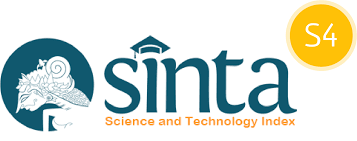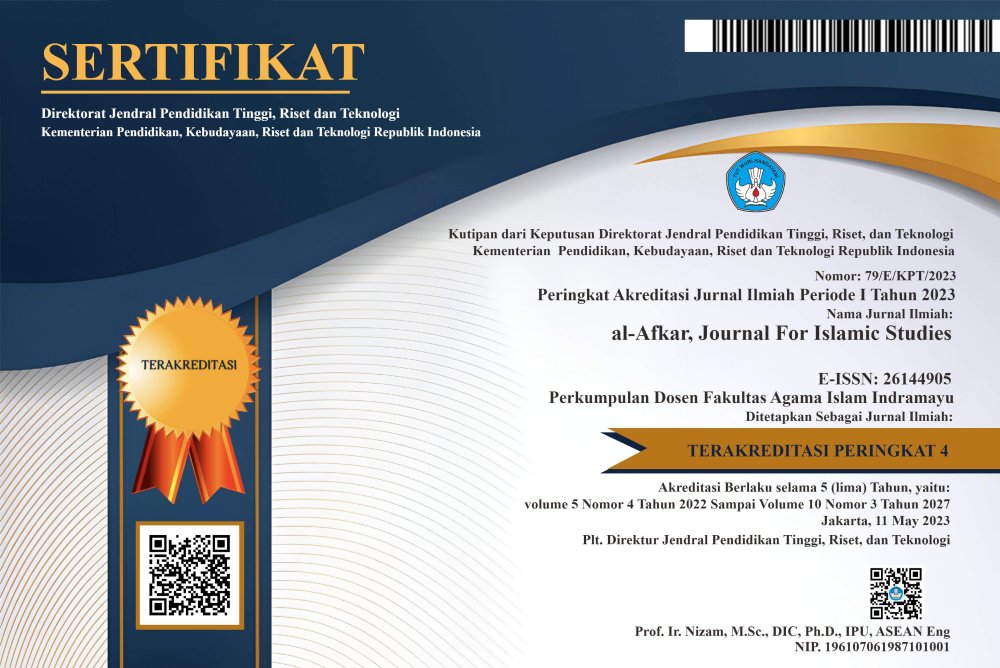The Influence of PowerPoint Media on the Learning Outcomes of PAI Students in Class IX B at SMPN
DOI:
https://doi.org/10.31943/afkarjournal.v8i1.1365Keywords:
PowerPoint Media, Learning Outcomes, Islamic Religious EducationAbstract
This research aims to investigate the effect of using PowerPoint media on Islamic Religious Education (PAI) learning outcomes for class IX B students at SMPN 2 Telukjambe Timur on the subject of Faith in the Last Day. The research population was students in Class IXB with a total of 30 students. The data collection technique uses a survey with a Likert scale-based questionnaire, which is designed based on conceptual, operational definitions, aspects, indicators, and questions related to PowerPoint media variables and learning outcomes. Data analysis was carried out descriptively and inferentially. The results of the research show that there is a positive relationship between the use of PowerPoint media and PAI learning outcomes for class IXB students at SMPN. This research is supported by a correlation test which shows a positive correlation between PowerPoint media variables and learning outcomes. Apart from that, the validity test using a construct test on the measuring instrument (questionnaire) shows that the data obtained after the research is valid. This research highlights the importance of using PowerPoint media in improving student PAI learning outcomes. The implication of this research is that the use of this media can be an effective strategy in the PAI learning process at junior high school level, by paying attention to aspects of the validity of the instruments used to measure its influence. From the calculation results, it is known that 9% of students' PowerPoint media is in the low category, 78% is in the medium category and 14% is in the high category, so it can be concluded that on average students' PowerPoint media is in the medium category. Then, the learning outcomes are 9% in the low category, 78% in the medium category and 14% in the high category, so it can be concluded that the average learning outcomes are in the medium category. Kolmogorov Smirnov normality test results using SPSS, sig value. 0.200 is greater than 0.05, so it can be concluded that the research data is normally distributed. Based on the output significance value (Sig.) of 0.000 < 0.05, it can be concluded that H0 is rejected and Ha is accepted, which means that "There is an influence of PowerPoint media (X) on learning outcomes (Y)". then the result of the R Square value is 0.983. This value means that the influence of PowerPoint Media (X) on Learning Outcomes (Y) is 98.3%, while 1.7% of Learning Outcomes (Y) are influenced by other variables that were not studied. Referring to the results above, it can be seen we conclude that "PowerPoint Media (X) has a positive effect on Learning Outcomes (Y) with a total effect of 98.3%." This positive influence means that the more PowerPoint media increases, the more it will influence the increase in student learning outcomes.
Downloads
References
Abdurrahman, A. (2017). Efektivitas dan Kendala Pembelajaran Sains Berbasis Inkuiri terhadap Capaian Dimensi Kognitif Siswa: Meta Analisis. Tadris: Jurnal Keguruan Dan Ilmu Tarbiyah, 2(1), 1. https://doi.org/10.24042/tadris.v2i1.1206
Daryanto, J. (2018). PENGGUNAAN MEDIA PEMBELAJARAN VIDEO INTERAKTIF UNTUK MENINGKATKAN PEMAHAMAN TEMBANG MACAPAT DALAM PEMBELAJARAN BAHASA DAERAH PADA SISWA SEKOLAH DASAR. Jurnal Pendidikan Dasar, 6(1).
Fathurrahman, P. (2007). Strategi pembelajaran. Bandung: Insan Media, 10–20.
Hamalik, O. (2002). Pendidikan guru berdasarkan pendekatan kompetensi. Bumi Aksara.
Jalinus, N. (2016). Ambiyar.(2016). Media Dan Sumber Pembelajaran, 97–107.
Muthoharoh, M. (2019). Media powerpoint dalam pembelajaran. Tasyri: Jurnal Tarbiyah-Syariah-Islamiyah, 26(1), 21–32.
Pribadi, B. A. (2017). Media & teknologi dalam pembelajaran. Prenada Media.
Rahman, S. (2022). Pentingnya motivasi belajar dalam meningkatkan hasil belajar. Prosiding Seminar Nasional Pendidikan Dasar.
Sarnoto, A. Z. (2012). Belajar dalam perspektif Psikologi dan Islam. Madani Institute, 1(2), 41–50.
Sudjana, N. (2010). Penilaian hasil proses belajar mengajar.
Sugiyono. (2021). Metode Penelitian Pendidikan. Alfabeta.
Syaiful, B. D., & Aswan, Z. (2006). Strategi belajar mengajar. Jakarta: Rineka Cipta.
Downloads
Published
How to Cite
Issue
Section
License
Copyright (c) 2025 Alleanena Asy Syura, Kasja Eki Waluyo, Tajudin Nur

This work is licensed under a Creative Commons Attribution 4.0 International License.



















